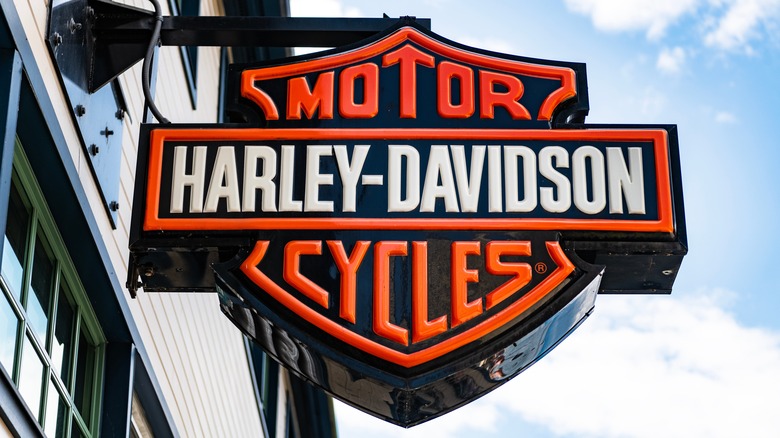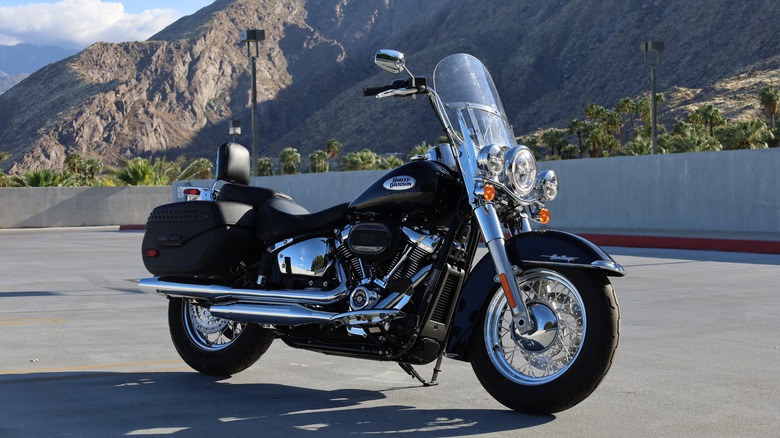Potato Patent: How Harley-Davidson Tried (And Failed) To Trademark Its Sound
There are loads of reasons why the Harley-Davidson brand and the motorcycles it's recognized for around the world are so iconic. Its bikes — yes, even the Harley models we love to hate — bear a distinct look to help them stand out from the competition, the logo is instantly recognizable, and the level of community surrounding these motorcycles is second to none. Not to mention, there's also that distinct Harley-Davidson sound that emanates from its bikes. If you've spent any time around them, odds are you know that signature idle rumble very well. Fully aware of this phenomena, the company attempted to trademark the sound some years ago, albeit with no success.
Going back to 1994, Harley-Davidson filed a sound trademark application in hopes of enshrining its ownership of the unmistakable exhaust sound into law. Unfortunately for the brand, attaining its legal goal wasn't as simple as signing a few documents. Harley was met with opposition from several competitors, who claimed that the technology behind the sound wasn't exclusive to Harley motorcycles, and that other similar V-twin motorcycle engines can make the sound, so they had no right to enforce a trademark. Thus, several years of litigation ensued, and by the year 2000, Harley-Davidson gave up its trademarking efforts.
After all that trouble, what kind of technology is behind this courtroom-contested Harley-Davidson sound?
What makes Harley-Davidson's iconic rumble?
Considering what's behind the idle sound of a Harley-Davidson motorcycle, it's understandable why other manufacturers didn't stand for the company's attempt to keep it for themselves. The main component behind the recognizable rumble is the V-twin engine, which has become the most well-known engine within the Harley catalogue. As it turns out, there are actually several non-Harley motorcycles powered by the V-twin, hence the opposition. The engine's design is what allows for the creation of this sound.
The most important thing to know about the V-twin in regard to the sound it makes is that its two pistons — both connected to the same pin in the crankshaft — don't fire at even intervals. This is due to both their configuration as well as the engine's V-shaped setup. Rather, one fires, the other follows at 315 degrees, a 405-degree gap is left, another fires, the other follows at 315 degrees, another 405-degree gap, and so on. On every second revolution of the crankshaft, the exhaust valve opens. This creates the sound of two pops in rapid succession followed by a brief break.
Even without the law supporting it as belonging solely to the brand, there's no mistaking that legendary Harley-Davidson sound. However, you could have a Harley-Davidson Livewire, the electric motorcycle that has no clutch nor the Harley rumble.

